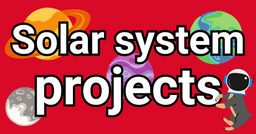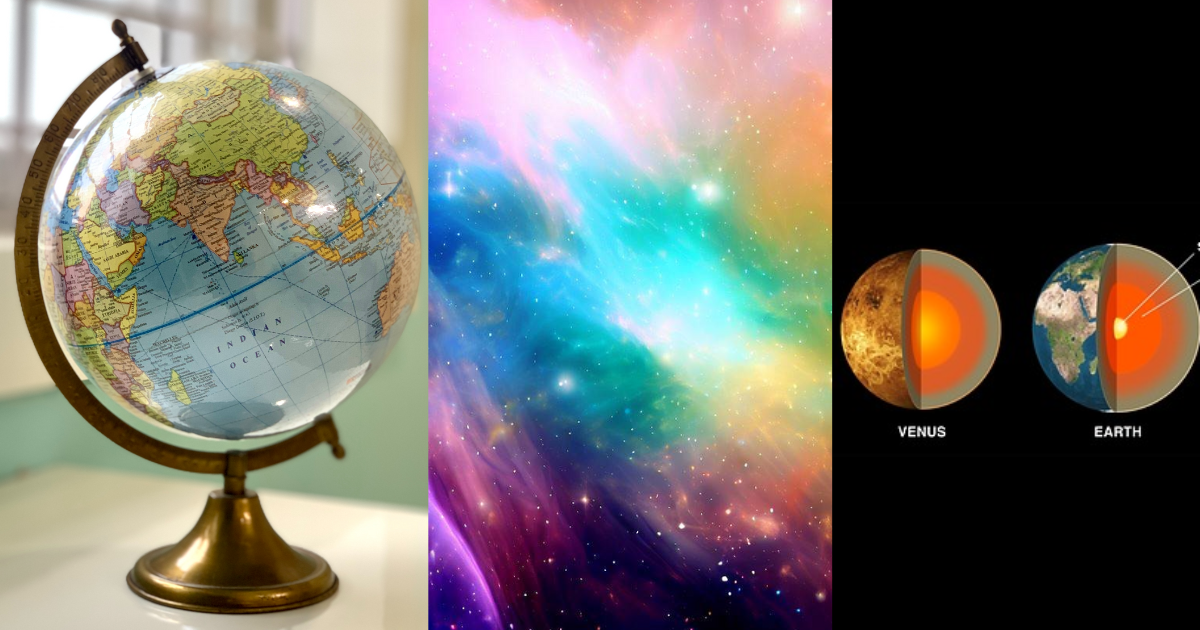Ideas for 3-D Solar System Models

Styrofoam Ball Solar System
Styrofoam balls can be decorated with tissue paper, fabric or construction paper to make the various planets. Use the largest styrofoam ball for the Sun. To display the planets, you can make a spinning solar system by first attaching the Sun to a rotating lazy susan tray with sticky putty. Then poke 8 stiff floral wires into the Sun. Attach one planet to the end of each floral wire.
Snow globe solar system
Find different colored bouncy rubber balls to represent each planet and the Sun. Put those into a glass jar with a leak-proof lid. Add glitter, water, vegetable glycerin and clear glue. After the lid is screwed on tightly, inverse the jar several times to mix up everything inside! The snow globe solar system is ready for you to gaze at it!
Solar System Model with Foil, Play dough and a Balloon
A solar system model can be made with everyday items like play dough, aluminum foil, and a balloon to understand planet positions in the solar system.
Play-doh Scale Model Solar System
A Play-doh model of the solar system is a fun way to illustrate the distance and size of all the planets.
Ideas for Solar System Posters
What do you put on a solar system poster?

Solar system posters are a way to represent the Sun and different planets in the solar system, usually in the correct order from the Sun. The order of the planets from the Sun are as follows: Mercury, Venus, Earth, Mars, Jupiter, Saturn, Uranus, Neptune.
Defining characteristics of the planets can be presented on the poster, such as the colors of the planets, their relative size to each other and interesting facts about each planet. NASA has a great resource on the size of the plants and the colors of the planets.
How do you make a solar system poster?
Poster Board
The first thing you need is the poster board! We recommend getting a dark colored poster board, or using black construction paper to cover up a white poster board. The dark color represents space, and will make the solar system stand out!
Poster board can be bought from dollar stores (Dollar Tree, Dollar General), craft stores such as Michaels or Hobby Lobby, or big-box stores such as Target or Walmart.
Next, there are many different options to represent the planets on the solar system poster. Here are a few ideas on how to make a standout solar system poster!
Solar system bottle caps

Bottle caps and plastic lids are recycled in this project to make planets! Gather bottle caps and plastic lids. Order the bottle caps and plastic lids from smallest to largest. Follow the NASA solar system sizes resource to match the planets by relative size to the appropriate cap or lid. Then paint the caps and lids so that it resembles the planets.
Pom Pom Solar System Poster

This solar system craft is a colorful and fun project for young kids. Take different sized and colored pom poms to represent the Sun and planets.
Yarn solar system

Make your own pom pom balls with yarn to represent the planets! This solar system craft is a fun and creative way to show how unique each planet is! Pick yarn to match the colors of each planet and cut out a cardboard square with edges equal to the planet diameter. Wrap the yarn 20-30 times around the cardboard square. After removing the yarn from the cardboard, use another piece of yarn to tie the bundle of yarn tightly in the middle. Cut the ends of the yarn apart and fluff up the yarn pom pom. Use yarn to hang the yarn planets on the poster board.
Felt solar system

The bright vibrant colors of felt make the planets project out from the black poster board! Cut out felt circles to represent each planet and a large yellow or orange half circle to represent the Sun, with an approximate size difference between the planets. Cut out a ring for Saturn, stripes and dots for Jupiter, green and blue patterns for Earth. Glue those onto the felt circle of the planet. Glue the planets onto the poster board.
Water color solar system

Use watercolor paint to create circles of different colors on watercolor paper, representing each planet. Paint in distinguishing features of each planet, such as a ring for Saturn, green and blue areas for Earth, stripes and dots for Jupiter. After the watercolor dries, cut the planets out. Glue the watercolor planets onto the poster board.
More Related Science Projects

Explore more about our universe beyond planet Earth with astronomy science projects! What makes stars twinkle? Make your own sundial!
And many more astronomy science projects!
 Nature is full of amazing things to explore! Let's go outside and have some fun with these nature science projects! Browse nature projects.
Nature is full of amazing things to explore! Let's go outside and have some fun with these nature science projects! Browse nature projects.
 Explore the wonder and excitement of these STEM projects! Each of these only need a few items you may have at home, so it's an easy and fun way to teach kids about STEM! Browse STEM projects.
Explore the wonder and excitement of these STEM projects! Each of these only need a few items you may have at home, so it's an easy and fun way to teach kids about STEM! Browse STEM projects.
 Earth science explores our planet from the solid ground to the vast oceans and the air we breathe. Browse earth science projects.
Earth science explores our planet from the solid ground to the vast oceans and the air we breathe. Browse earth science projects.
 Environmental science is about how human activities affect the natural world. Browse environmental science projects.
Environmental science is about how human activities affect the natural world. Browse environmental science projects.
 Chemistry is the study of matter, which is everything around us! Explore different chemical reactions in these science projects! Browse chemistry projects.
Chemistry is the study of matter, which is everything around us! Explore different chemical reactions in these science projects! Browse chemistry projects.
 Physics is the study of how the universe works. Discover the forces and motions that give rise to volcanic eruptions! Browse physics projects.
Physics is the study of how the universe works. Discover the forces and motions that give rise to volcanic eruptions! Browse physics projects.
 Engineering is all about solving problems using science and math. Browse engineering projects.
Engineering is all about solving problems using science and math. Browse engineering projects.


















 Nature is full of amazing things to explore! Let's go outside and have some fun with these nature science projects! Browse
Nature is full of amazing things to explore! Let's go outside and have some fun with these nature science projects! Browse  Explore the wonder and excitement of these STEM projects! Each of these only need a few items you may have at home, so it's an easy and fun way to teach kids about STEM! Browse
Explore the wonder and excitement of these STEM projects! Each of these only need a few items you may have at home, so it's an easy and fun way to teach kids about STEM! Browse  Earth science explores our planet from the solid ground to the vast oceans and the air we breathe. Browse
Earth science explores our planet from the solid ground to the vast oceans and the air we breathe. Browse  Environmental science is about how human activities affect the natural world. Browse
Environmental science is about how human activities affect the natural world. Browse  Chemistry is the study of matter, which is everything around us! Explore different chemical reactions in these science projects! Browse
Chemistry is the study of matter, which is everything around us! Explore different chemical reactions in these science projects! Browse  Physics is the study of how the universe works. Discover the forces and motions that give rise to volcanic eruptions! Browse
Physics is the study of how the universe works. Discover the forces and motions that give rise to volcanic eruptions! Browse  Engineering is all about solving problems using science and math. Browse
Engineering is all about solving problems using science and math. Browse